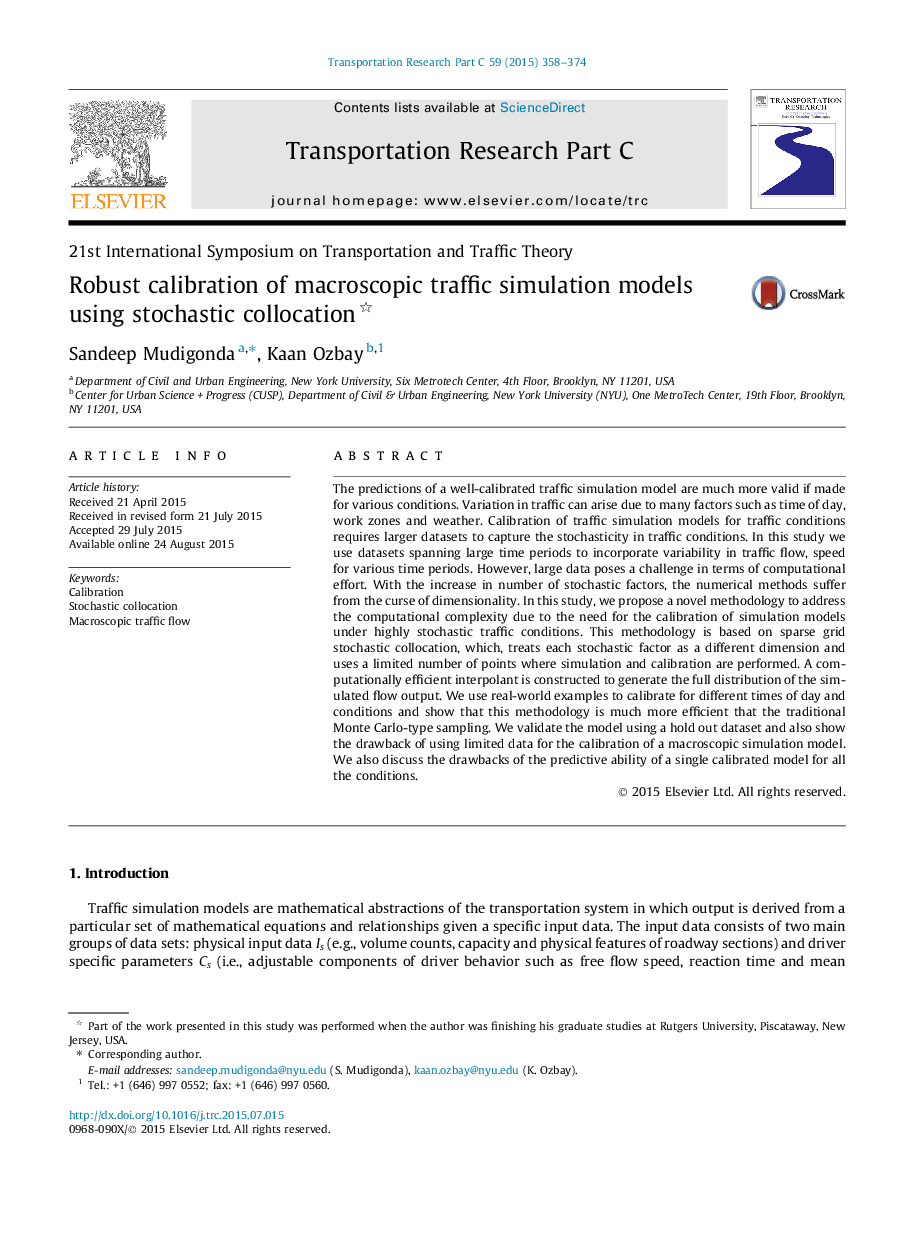| کد مقاله | کد نشریه | سال انتشار | مقاله انگلیسی | نسخه تمام متن |
|---|---|---|---|---|
| 524875 | 868867 | 2015 | 17 صفحه PDF | دانلود رایگان |
• A novel calibration methodology using stochastic collocation.
• Sparse grid interpolant of deterministic simulation output to generate the full distribution.
• Simulation calibration by estimating separate set of parameters for different traffic conditions.
• Proposed approach is more effective than estimating a single model best suiting all traffic conditions.
• Case studies show methodology is computationally very efficient than MC-type exhaustive sampling.
The predictions of a well-calibrated traffic simulation model are much more valid if made for various conditions. Variation in traffic can arise due to many factors such as time of day, work zones and weather. Calibration of traffic simulation models for traffic conditions requires larger datasets to capture the stochasticity in traffic conditions. In this study we use datasets spanning large time periods to incorporate variability in traffic flow, speed for various time periods. However, large data poses a challenge in terms of computational effort. With the increase in number of stochastic factors, the numerical methods suffer from the curse of dimensionality. In this study, we propose a novel methodology to address the computational complexity due to the need for the calibration of simulation models under highly stochastic traffic conditions. This methodology is based on sparse grid stochastic collocation, which, treats each stochastic factor as a different dimension and uses a limited number of points where simulation and calibration are performed. A computationally efficient interpolant is constructed to generate the full distribution of the simulated flow output. We use real-world examples to calibrate for different times of day and conditions and show that this methodology is much more efficient that the traditional Monte Carlo-type sampling. We validate the model using a hold out dataset and also show the drawback of using limited data for the calibration of a macroscopic simulation model. We also discuss the drawbacks of the predictive ability of a single calibrated model for all the conditions.
Journal: Transportation Research Part C: Emerging Technologies - Volume 59, October 2015, Pages 358–374
